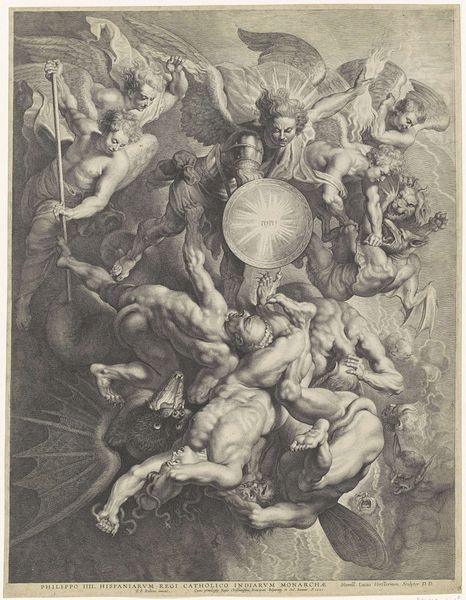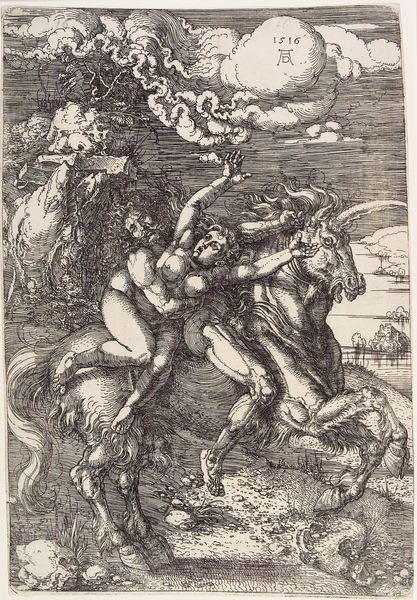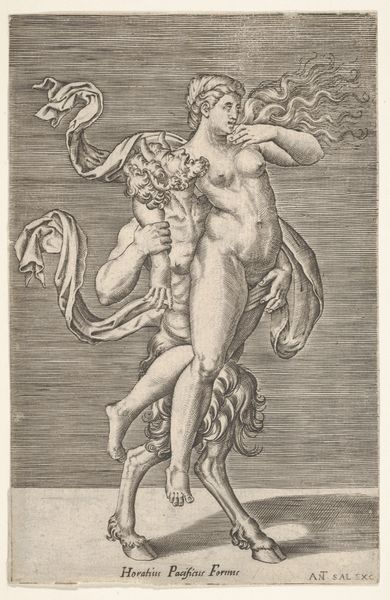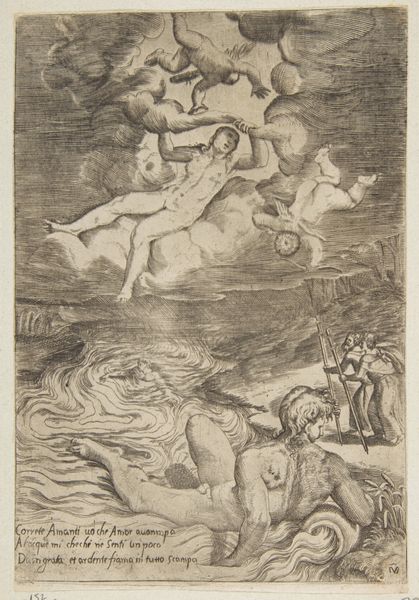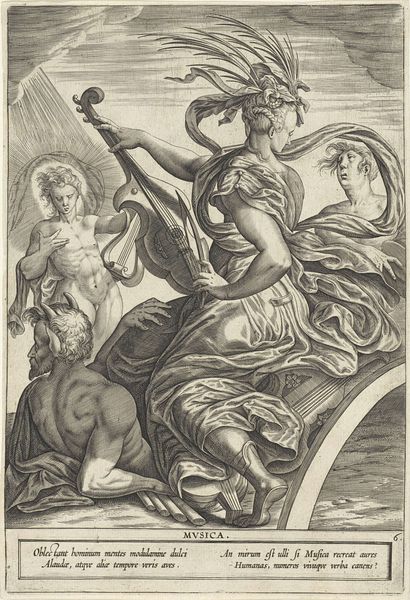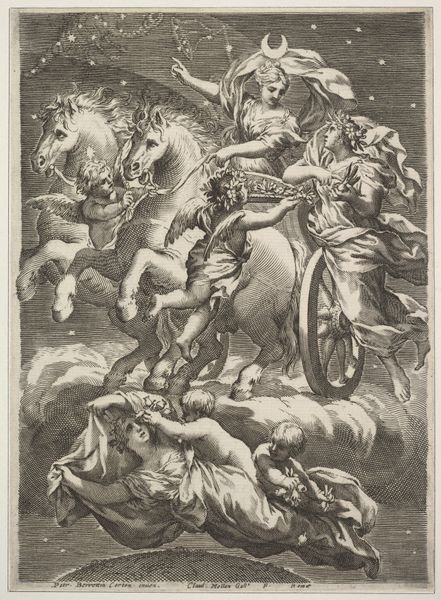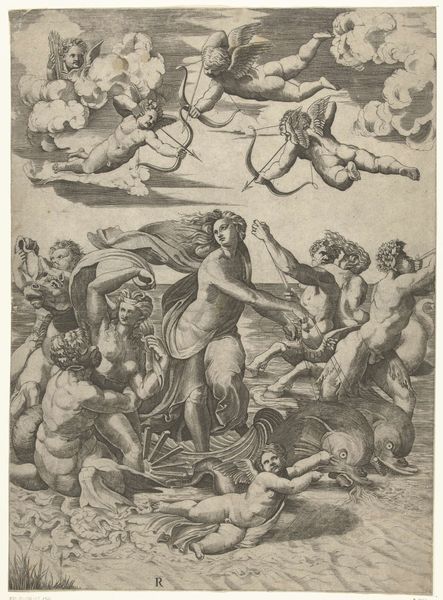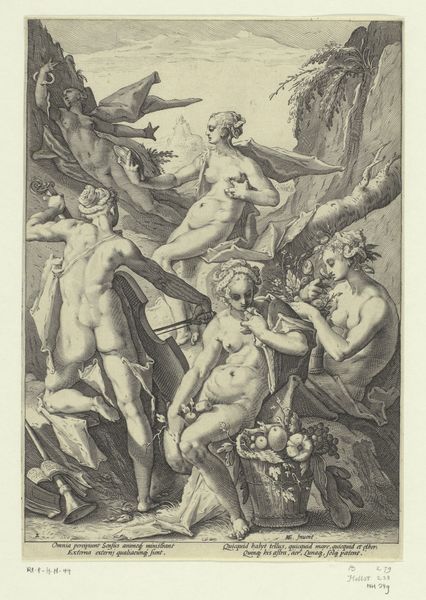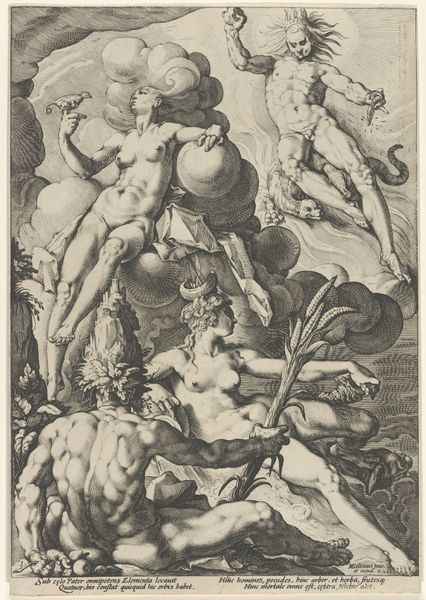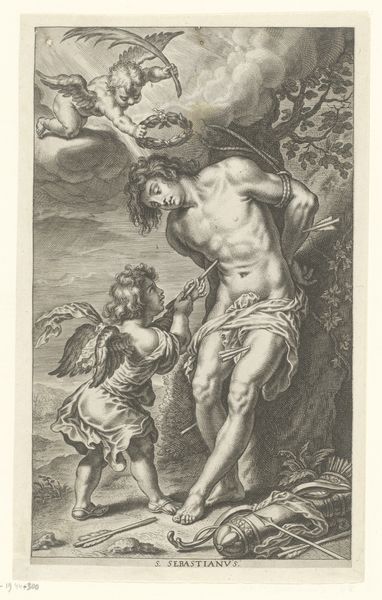
print, engraving
# print
#
old engraving style
#
mannerism
#
figuration
#
history-painting
#
nude
#
engraving
Dimensions: height 222 mm, width 182 mm
Copyright: Rijks Museum: Open Domain
Giovanni Jacopo Caraglio created this print of Hercules slaying the centaur Nessus in the 16th century. The design is brought to life through the precise, repetitive labor of engraving, where the artist incises lines into a copper plate, which is then inked and printed. Look closely at the image, and you can see how the density and direction of these engraved lines create light, shadow, and texture, defining the muscular forms of the figures and the dramatic scene. The story depicts Hercules, bow drawn, avenging Deianira's attempted abduction by Nessus. Engraving, unlike the unique gesture of drawing or painting, inherently involves reproduction. Prints like this circulated widely during the Renaissance, allowing artists to disseminate their ideas. The finished artwork, striking as it is, represents only the final step in a labor-intensive process. The finished prints could reach a broad audience and, of course, generate revenue. Considering the artistry and labor embedded in this print challenges our conventional distinctions between art, craft, and industry.
Comments
No comments
Be the first to comment and join the conversation on the ultimate creative platform.
